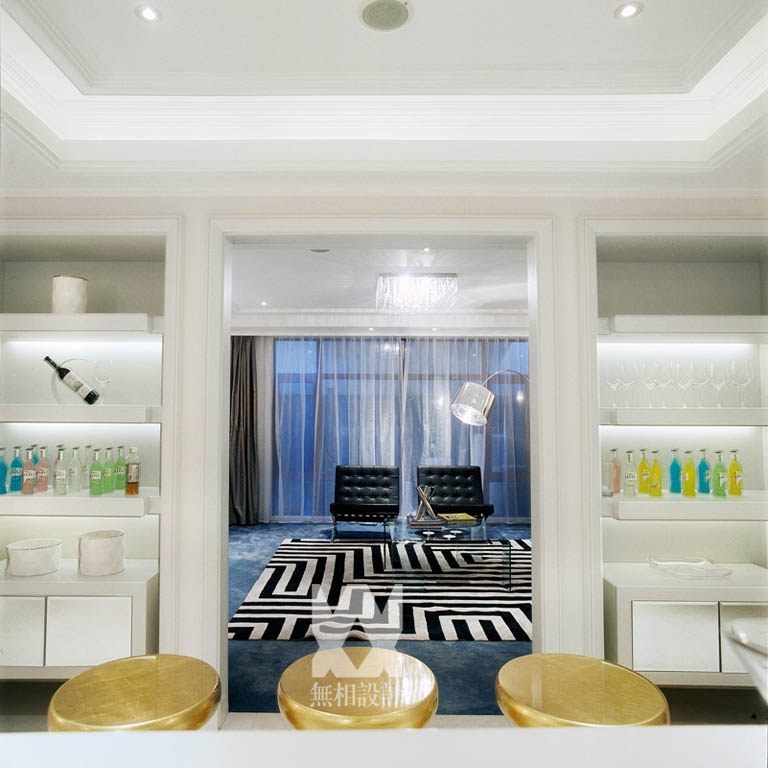The Winged House K2LD Architects
2013-06-19 01:00
位于一个独特的三角形地块上的私人家庭住宅,有翅膀的房子用两种突出的形式-斜方体-将这个地点固定起来。这些形式打开的主要观点在遗址的后面,其中有3棵雄伟的棕榈树,和郁郁葱葱的绿色植物。这些拥抱形式为友好的私人聚会开辟了一个中间的花园。
A private family residence situated on a uniquely shaped triangular plot, the Winged House frames the site with two prominent forms – the trapeziums. These forms open towards the main view at the back of the site where 3 existing majestic palms are, and of lush greenery. These embracing forms carve out and frame a middle garden for friendly and private gatherings.
针对热带气候背景,这种正式的探索经历了一个转折,即从切割开口的纯梯形形式转向将屋顶与形式分开。这种形式借鉴了对传统马来建筑的理解,在这种建筑中,房屋本身对气候做出了反应,给居民带来了舒适感。传统的马来人住宅的形式被重新解读为折叠式斜方体,同时保持了将新鲜空气带入室内空间的气候目的。形式上采用了延展的悬挑屋檐和双斜屋顶等单元。延伸的悬空屋檐表现为自然通风空间的广泛屋顶悬垂,即使在季节性的大雨中,这些屋檐也有许多遮蔽和遮荫。
In response to the tropical climate context, the formal exploration took a turn from cutting openings from a pure trapezoid form to separating roof from form. The form draws from the understanding of traditional Malay architecture where the house itself is climatically responsive to bring comfort to its inhabitants. The form of the traditional Malay house is reinterpreted into folding trapeziums whilst keeping its climatic purpose of bringing in fresh air into its interior space. Elements such as the extended overhanging eaves and the double pitched roof are adopted into the form. The extended overhanging eaves are manifested in the form of extensive roof overhangs for the naturally ventilated spaces, which are enjoyed with much shelter and shade even during the seasonal heavy rain downpours.
传统的双斜屋顶被转化为屋顶形态的分离和错位,屋顶的这种分裂实现了光和阴影进入室内空间的作用。空间,如双容量餐厅,二层通道和大庭院都被庆祝的重叠分裂屋顶和它的轻的发挥。这个插槽在夜间被进一步增强,暗灯配件照亮了裂口。交错屋顶形式也创造了将自然通风渗透到生活空间的可能性。
The traditional double pitched roof is translated into the separation and staggering of the roof form. This split of the roof achieved a play of light and shadows into the interior space. Spaces such as the double volume Dining room, the 2nd storey passageway and the large Patio are all celebrated with the overlapping split roof and its light play. This slot is further enhanced at night with concealed light fittings illuminating the split. The staggered roof form also creates for the possibility of the penetration of natural ventilation into the living spaces.
物质性是加强两种翼型、中间空间和顶板关系的关键。在两种形式之间的中间空间是主入口门厅和起居室,两侧有两种自然分割的花岗岩墙,与房屋的屋顶和垂直木材线的轻盈性形成鲜明对比。木材在整个房屋中广泛使用,选择一种较轻的木材(缅甸柚木)作为屋顶的底部,而较暗的木材(成井)作为填充介质(即遮阳屏障),以创造一个深层次的立面。垂直的木材屏障不仅有助于提供阴凉的阳光,而且它有助于把房子和周围绿色植物茂盛的垂直树干混合起来。
Materiality is key to strengthening the relationship of the two winged forms, its space in-between and roof on roof. In the intermediate space between two forms is the main entrance foyer and Living room which is flanked with two feature natural split granite walls, contrasting its heavy presence with the lightness of the roofs and vertical timber lines of the house. Timber is extensively used throughout the house, choosing a lighter species of timber (Burmese Teak) for the underside of the roofs versus the darker wood (Chengai) as the infill medium (ie: the sun-shading screens) to create a play of depth of the façade. The vertical timber screens not only help in providing shade from the harsh sun, but it helps blend the house with the lush vertical tree trunks of the surrounding greenery.
羽翼屋,在其正式表达和物质语言,结果是一个住所,舒适地坐在它的背景下,在一个安静的‘翅膀’拥抱网站和居住在里面。
The Winged House, in its formal expressions and material language, results in an abode that sits snugly in its context in a quiet ‘winged’ embrace of the site and dwelling within.
Architects K2LD Architects
Location Singapore, Singapore
Project Team Ko Shiou Hee, Leong Lai Ping, Elita Ong
Photographs Patrick Bingham-Hall
 举报
举报
别默默的看了,快登录帮我评论一下吧!:)
注册
登录
更多评论
相关文章
-

描边风设计中,最容易犯的8种问题分析
2018年走过了四分之一,LOGO设计趋势也清晰了LOGO设计
-

描边风设计中,最容易犯的8种问题分析
2018年走过了四分之一,LOGO设计趋势也清晰了LOGO设计
-

描边风设计中,最容易犯的8种问题分析
2018年走过了四分之一,LOGO设计趋势也清晰了LOGO设计






























































